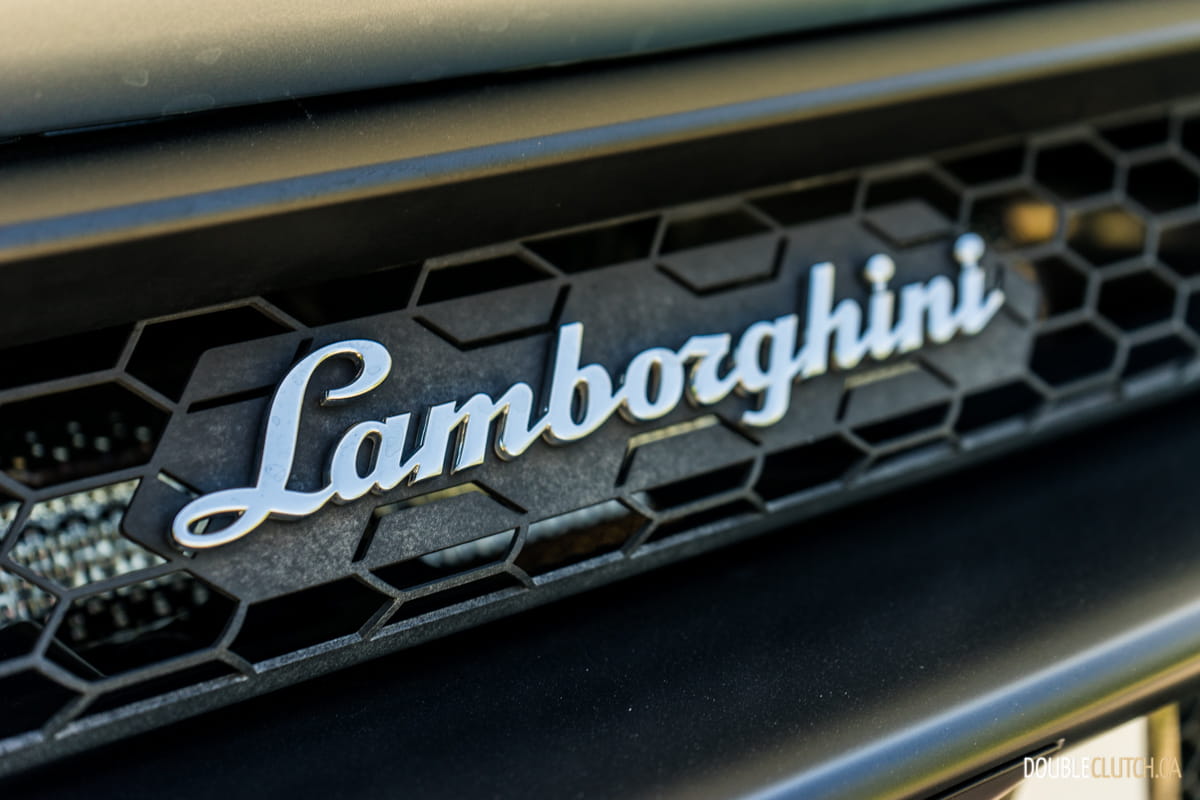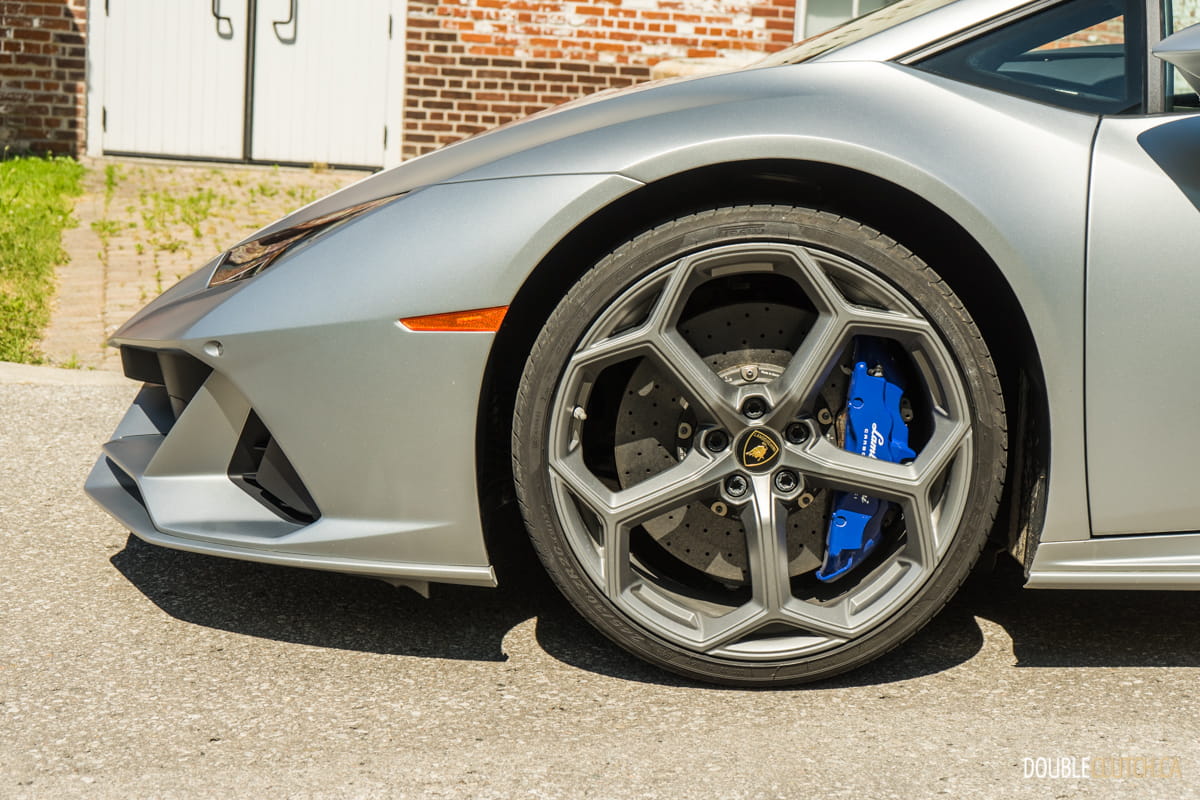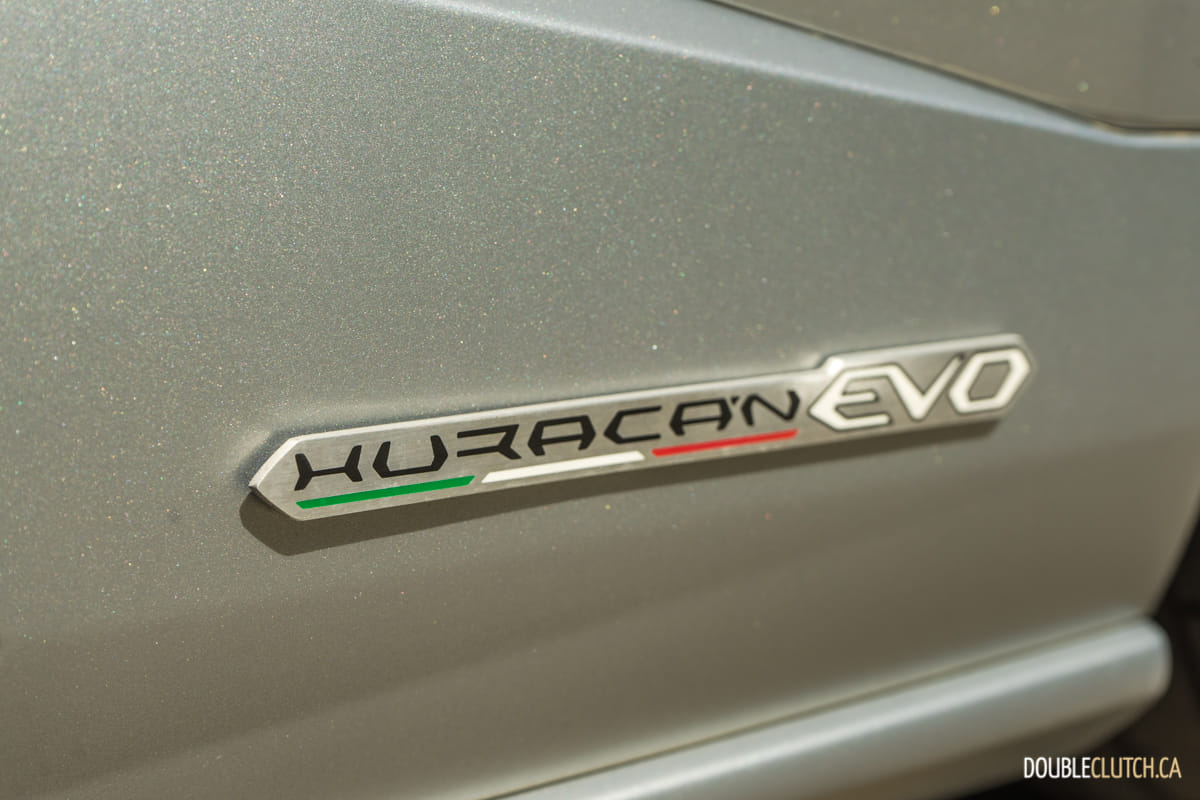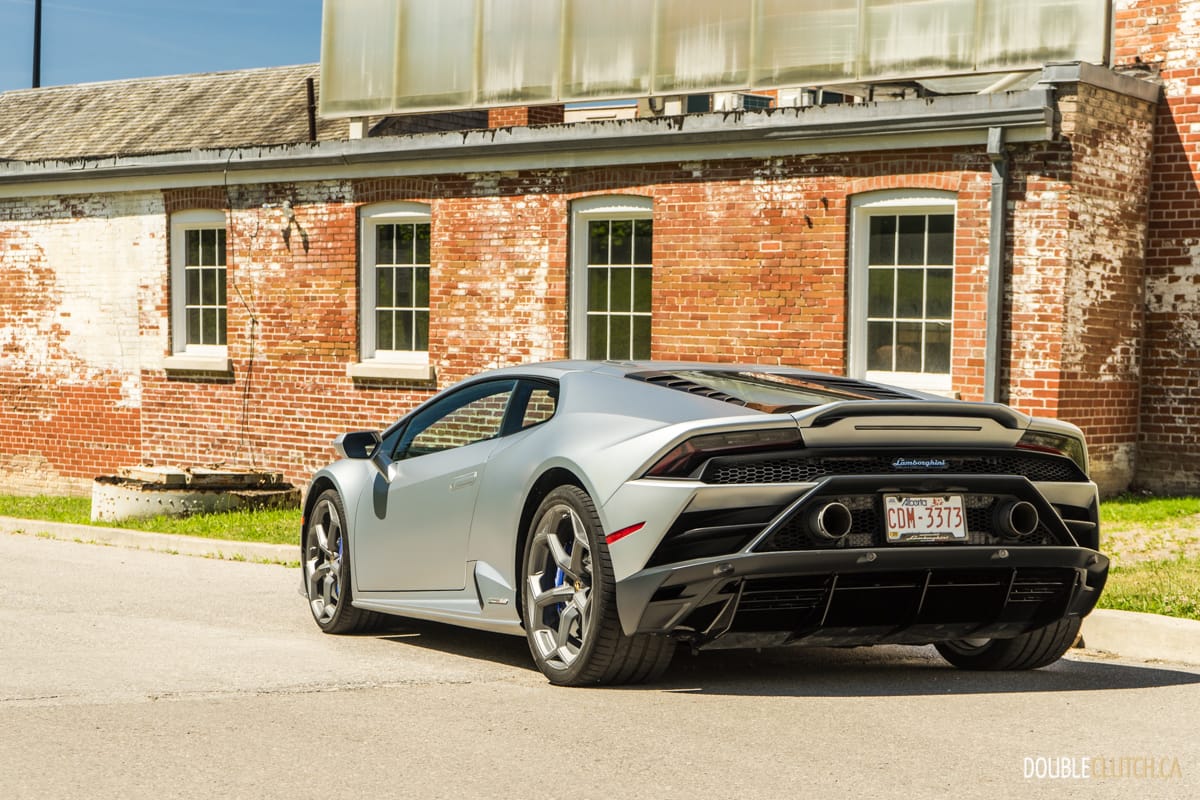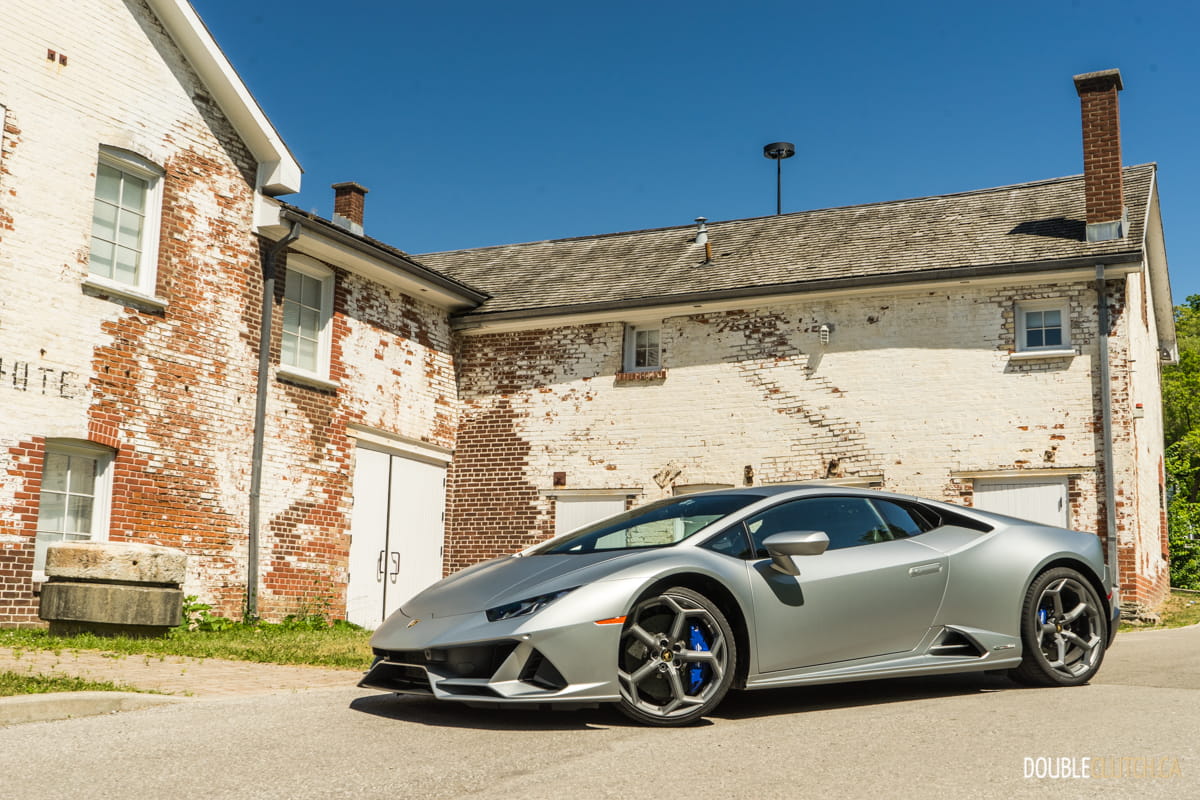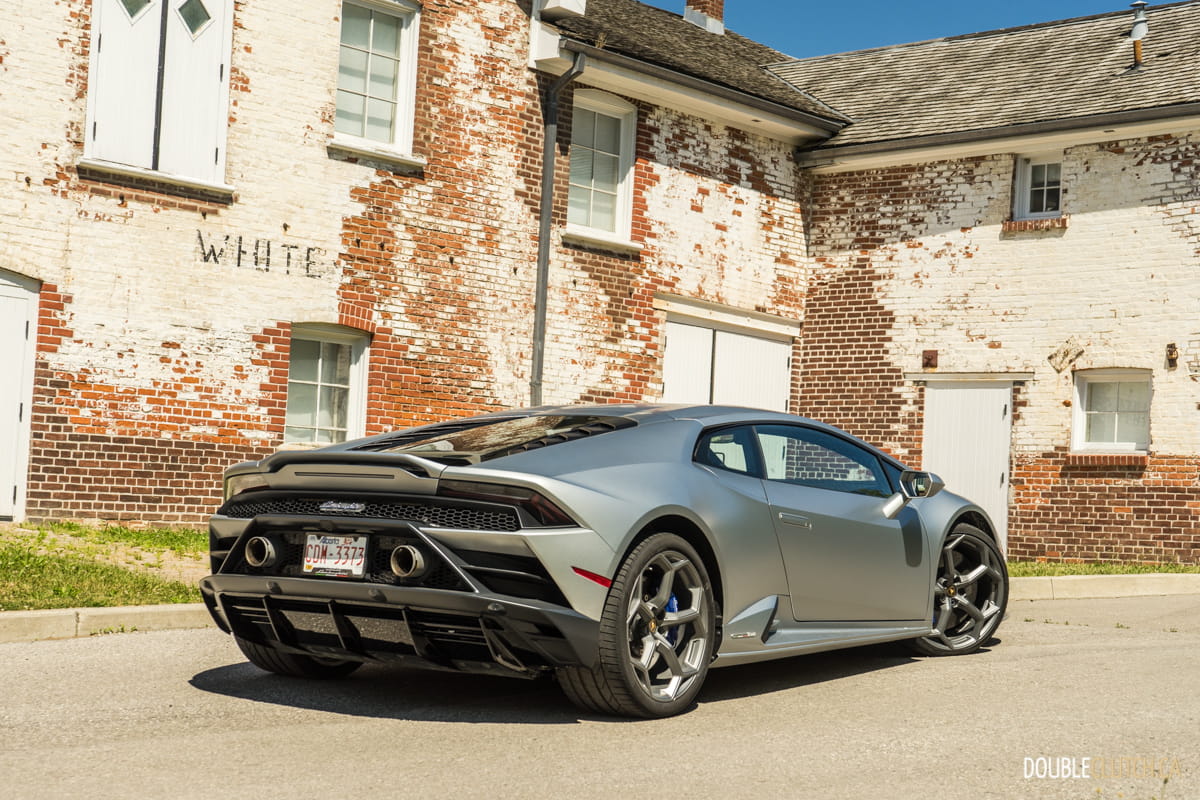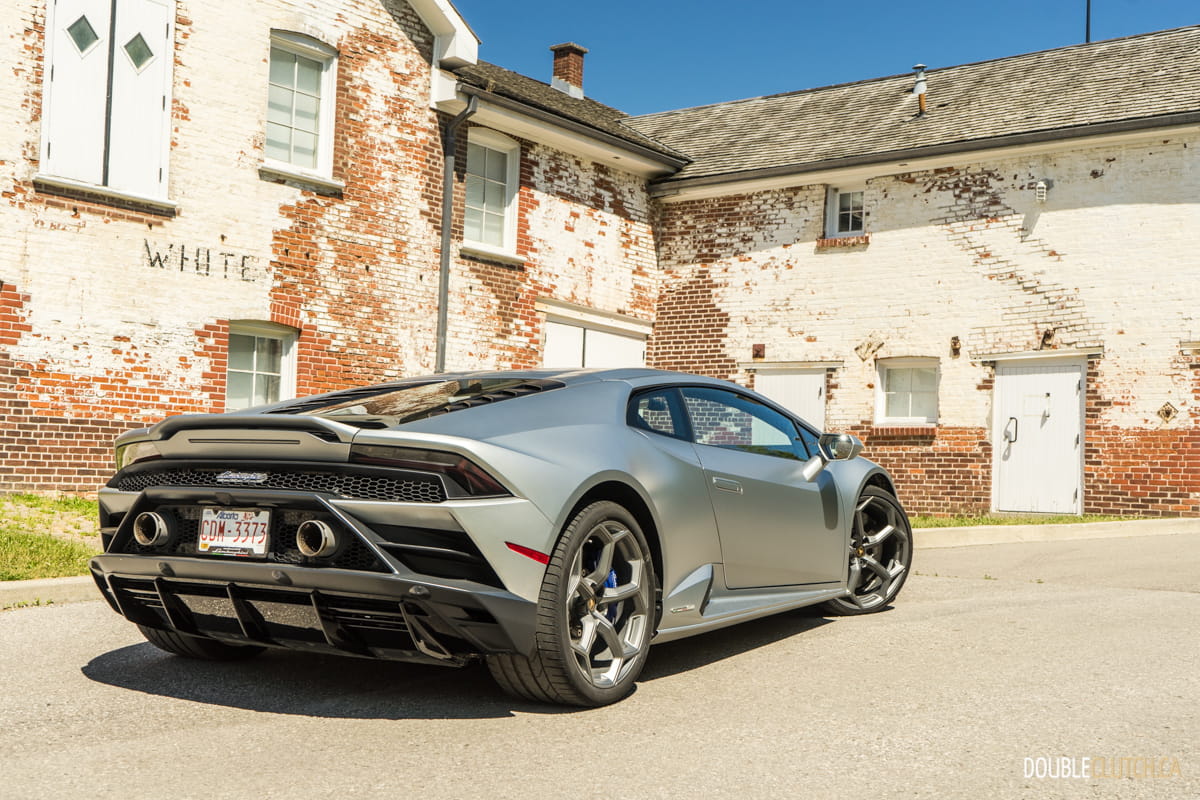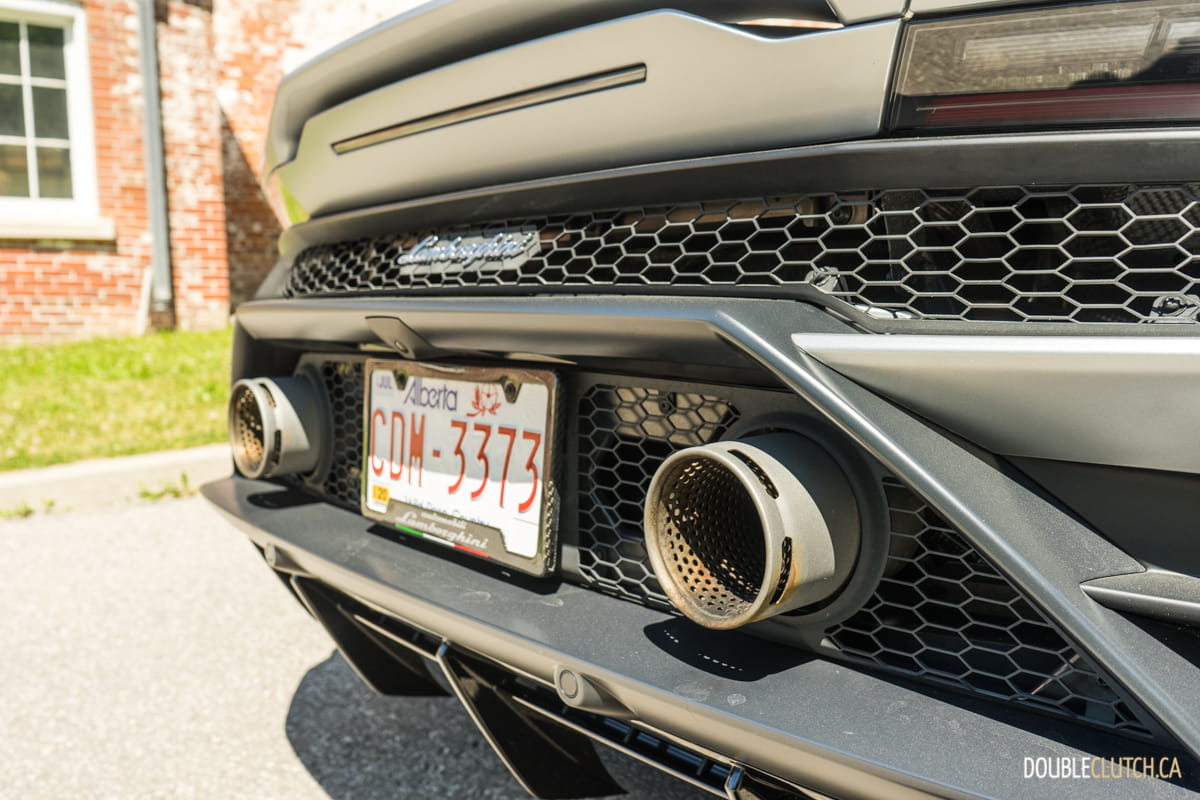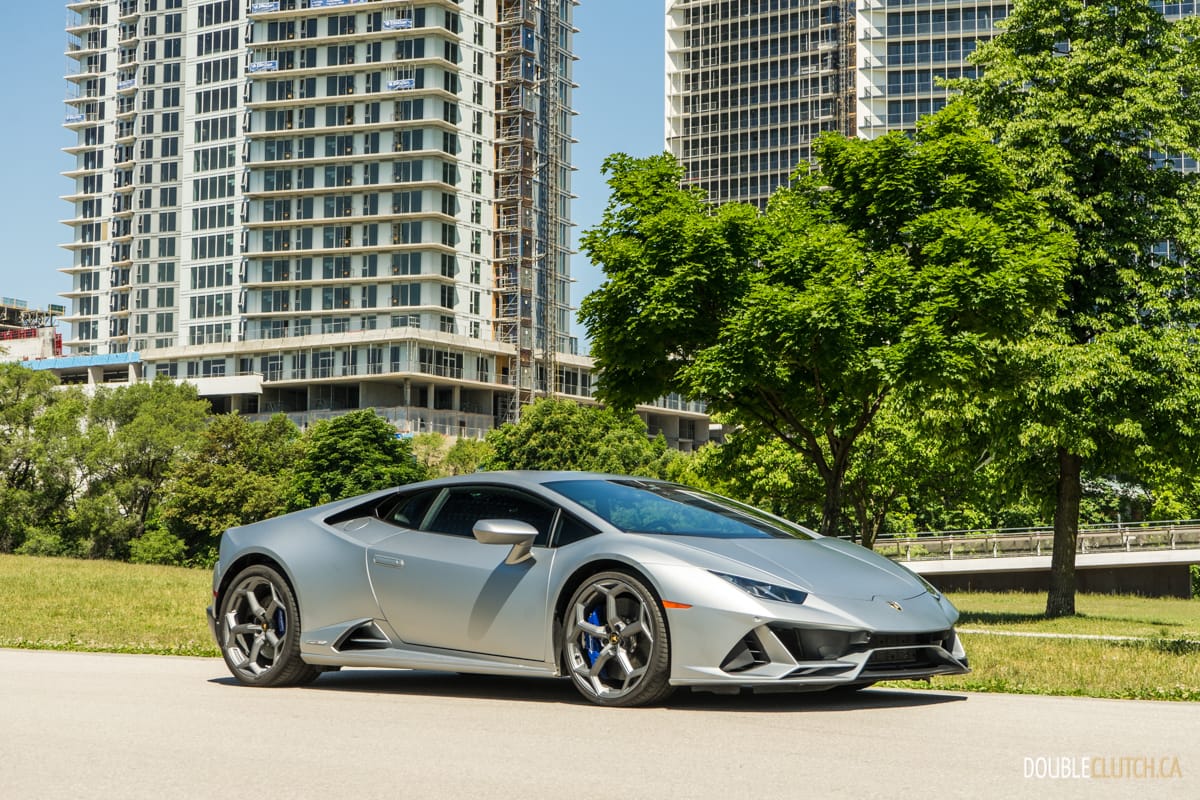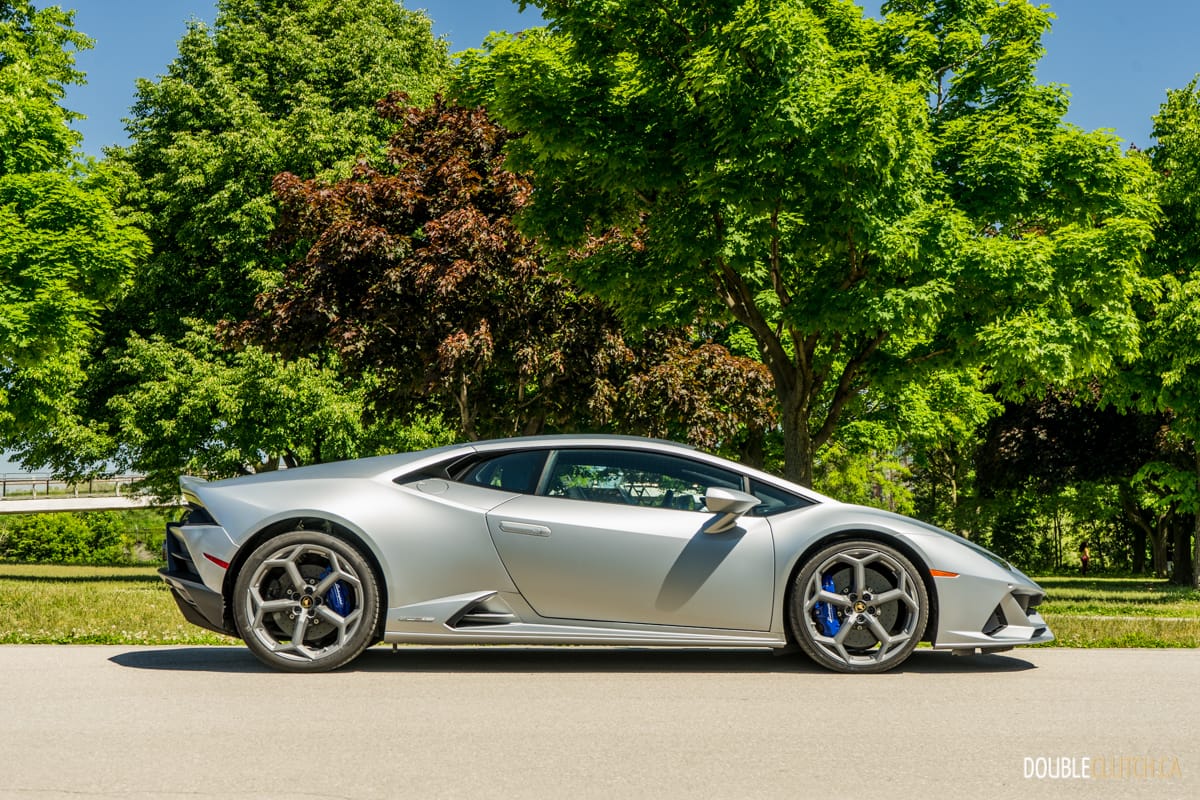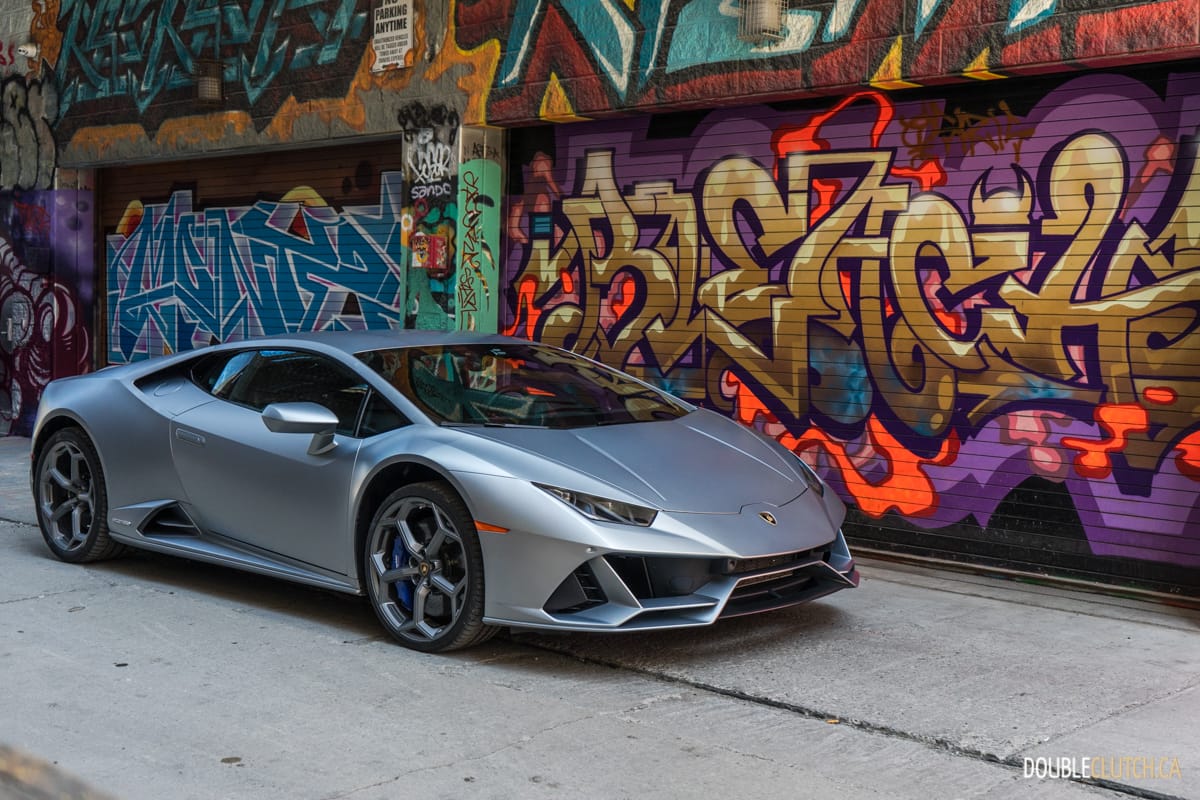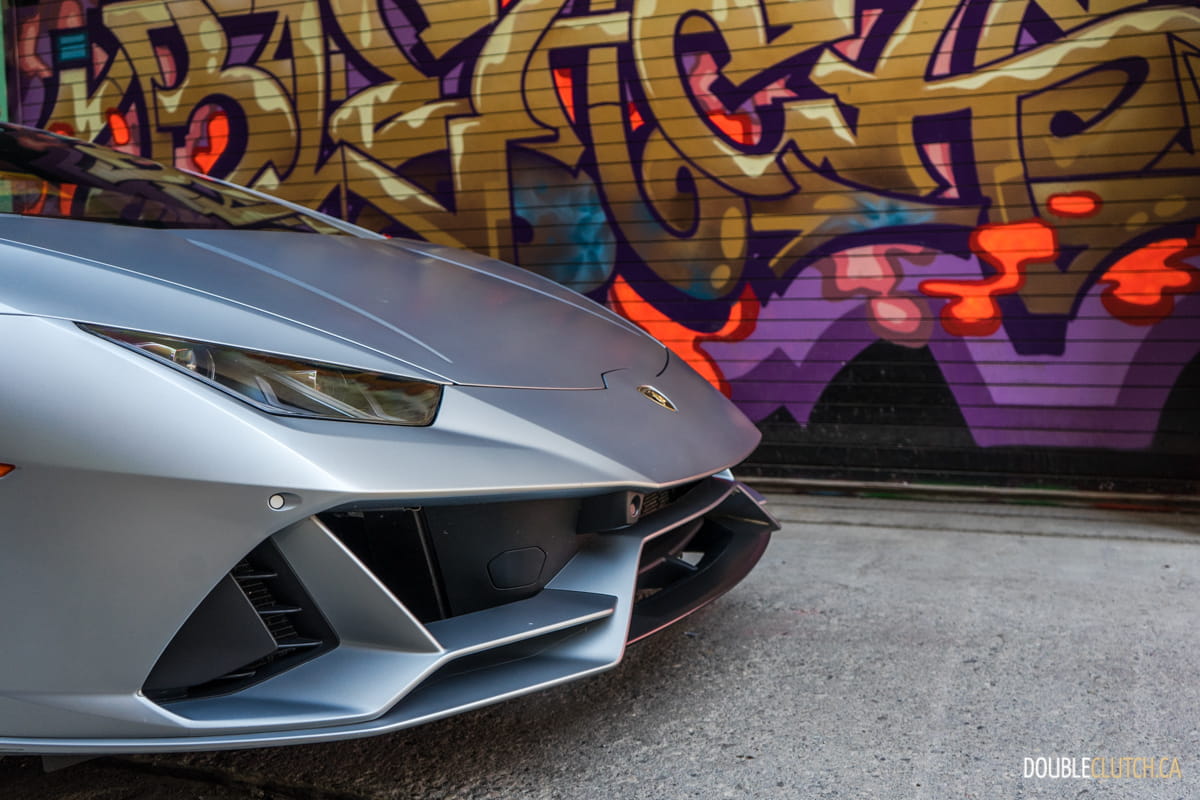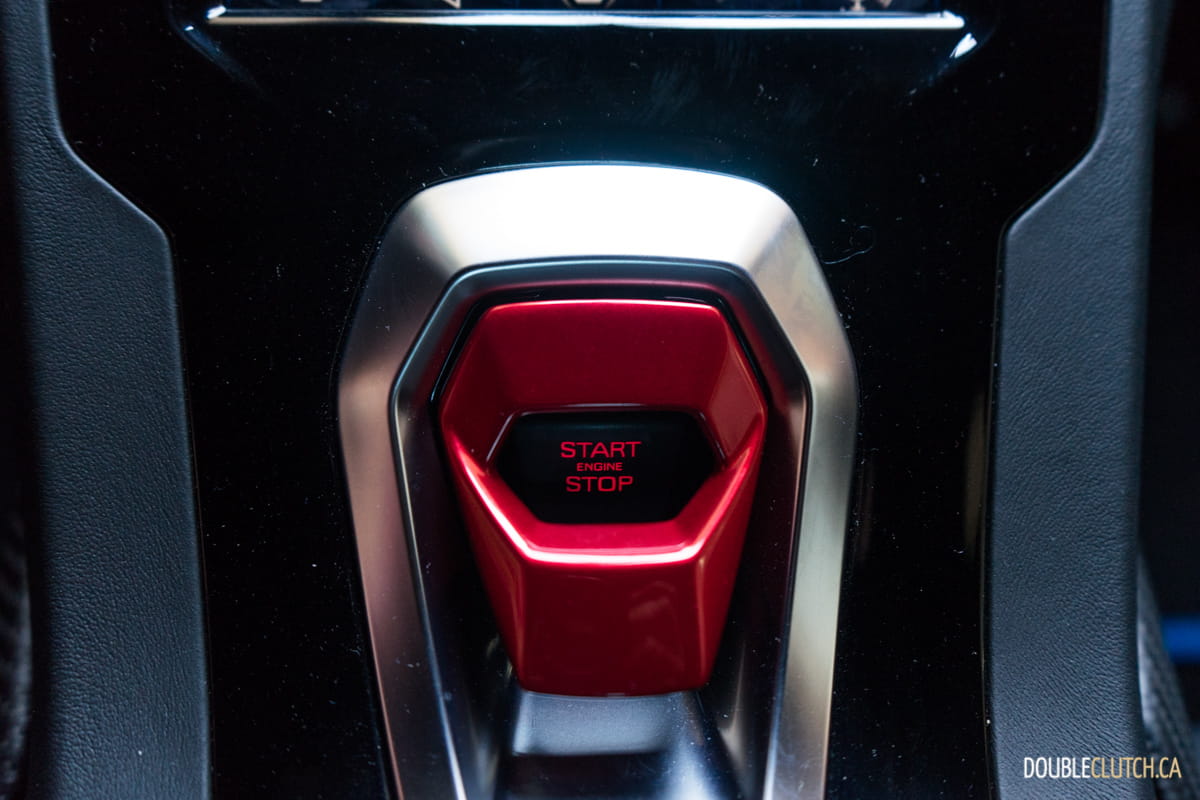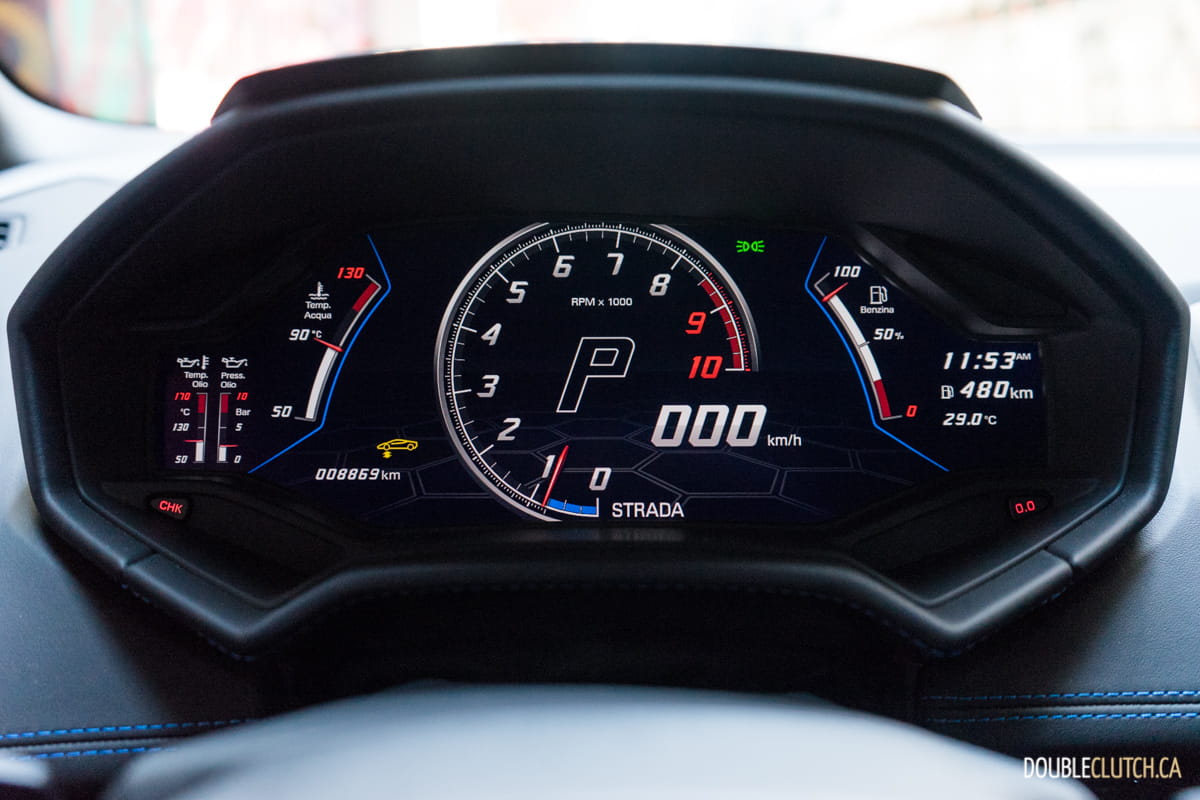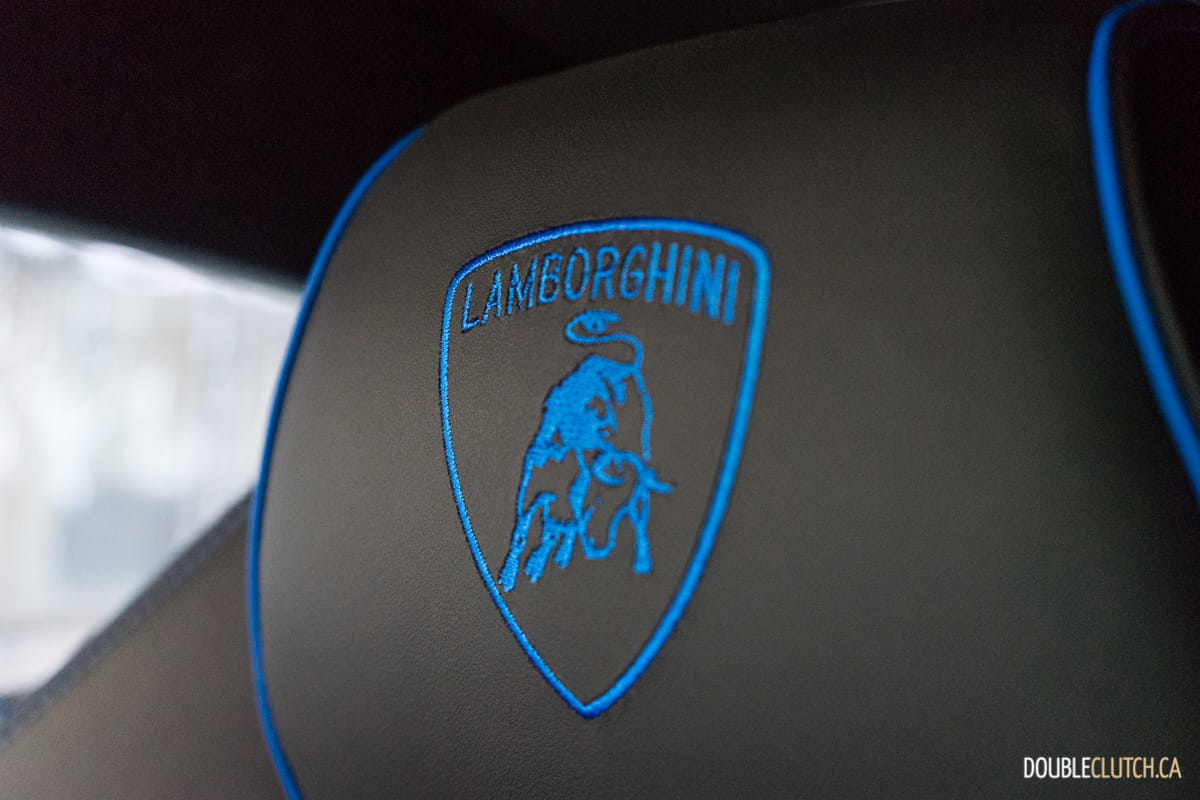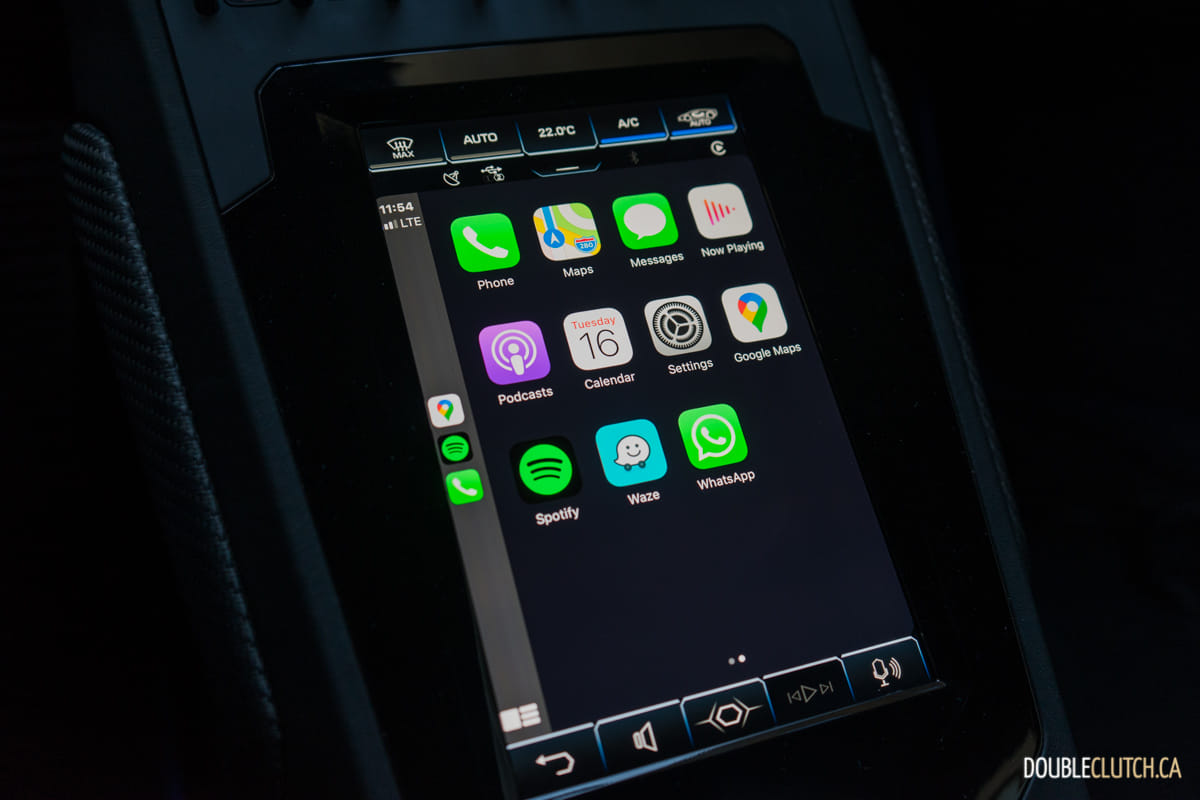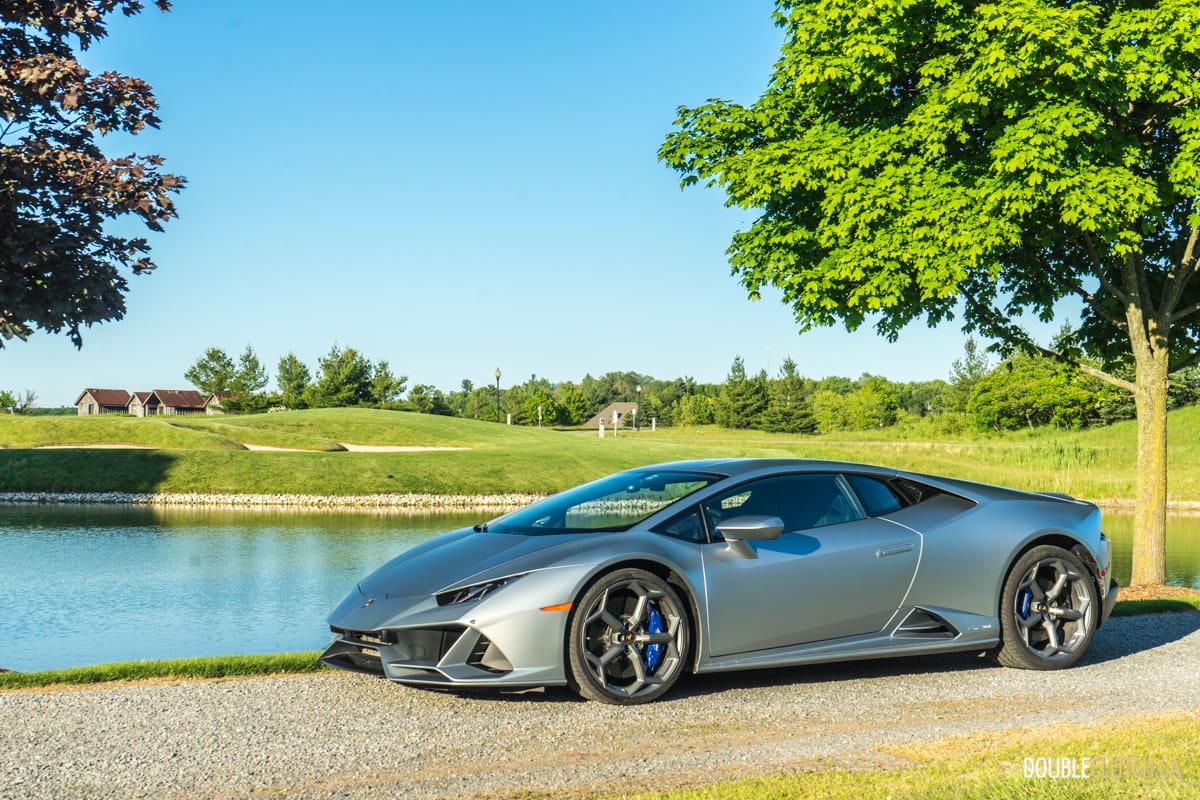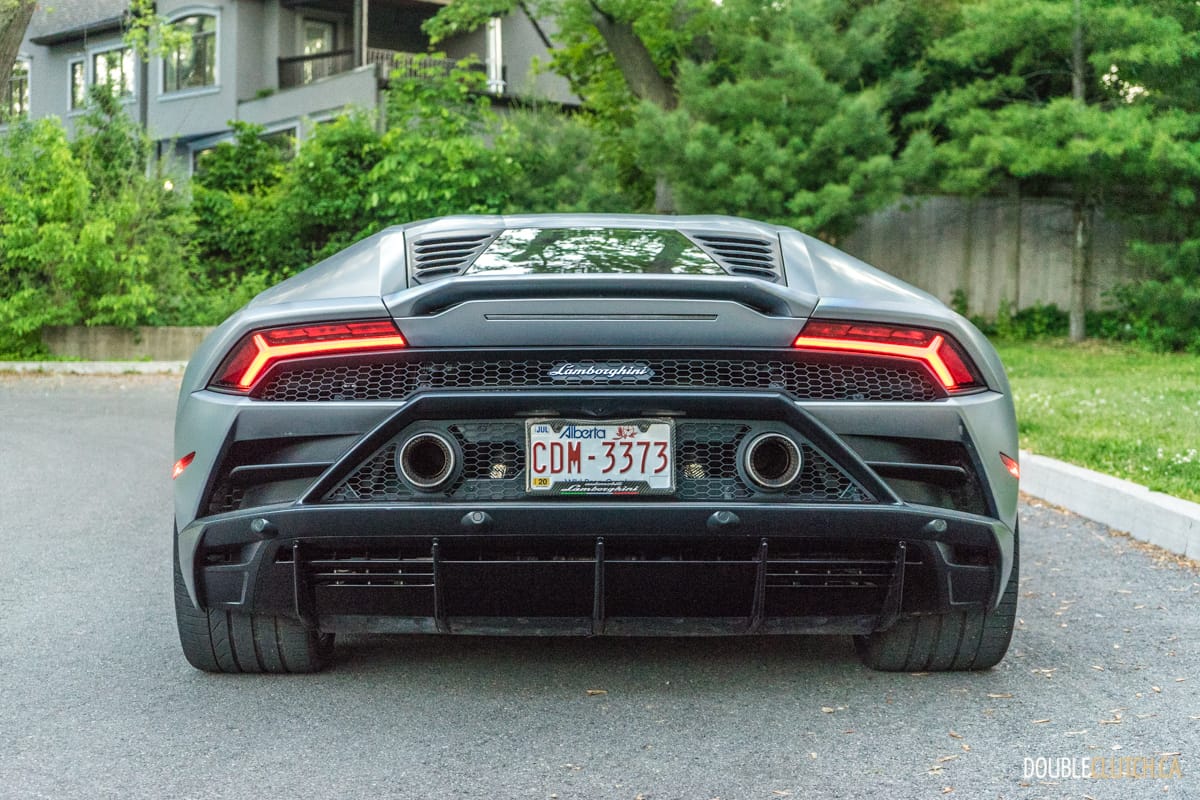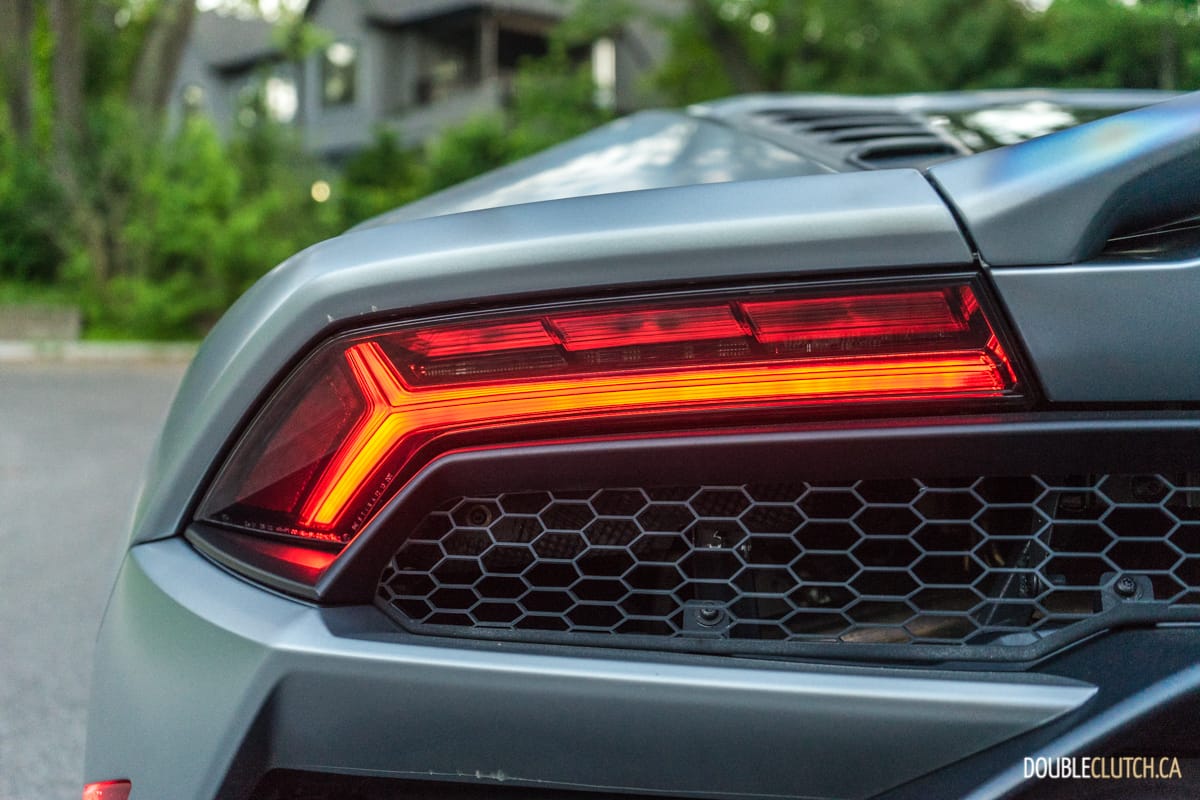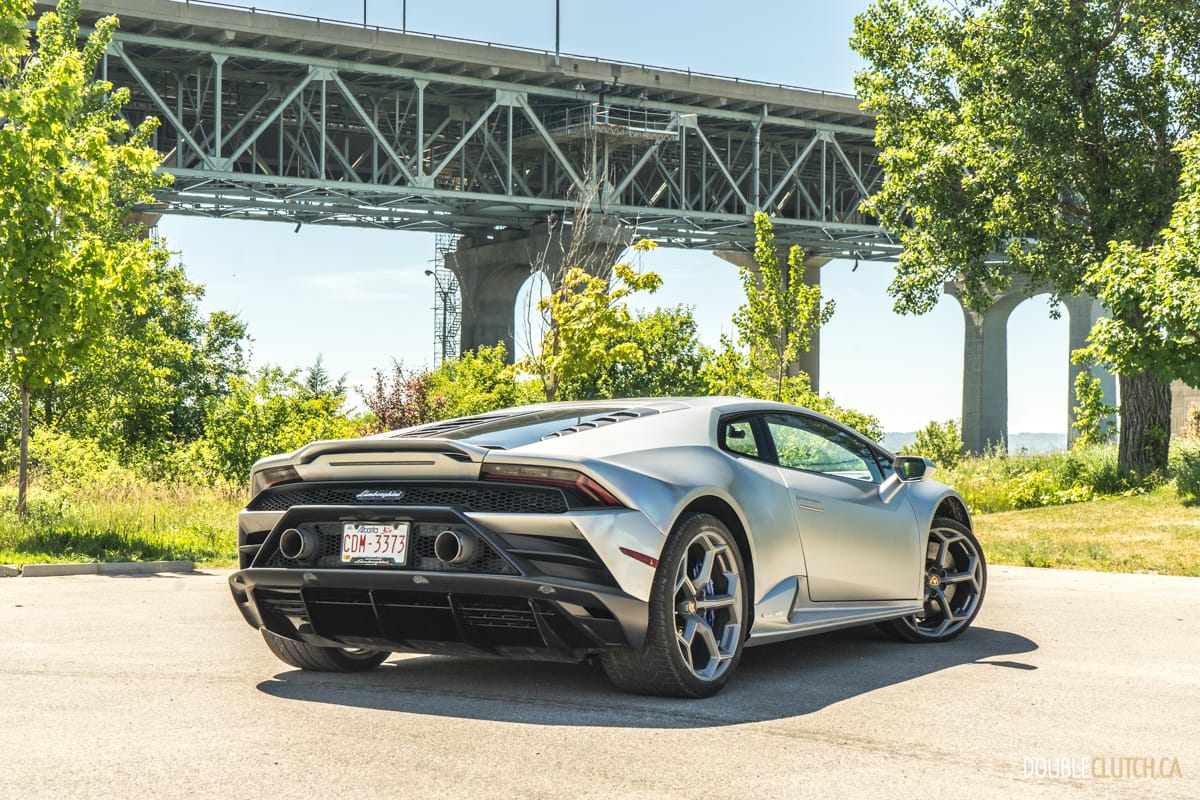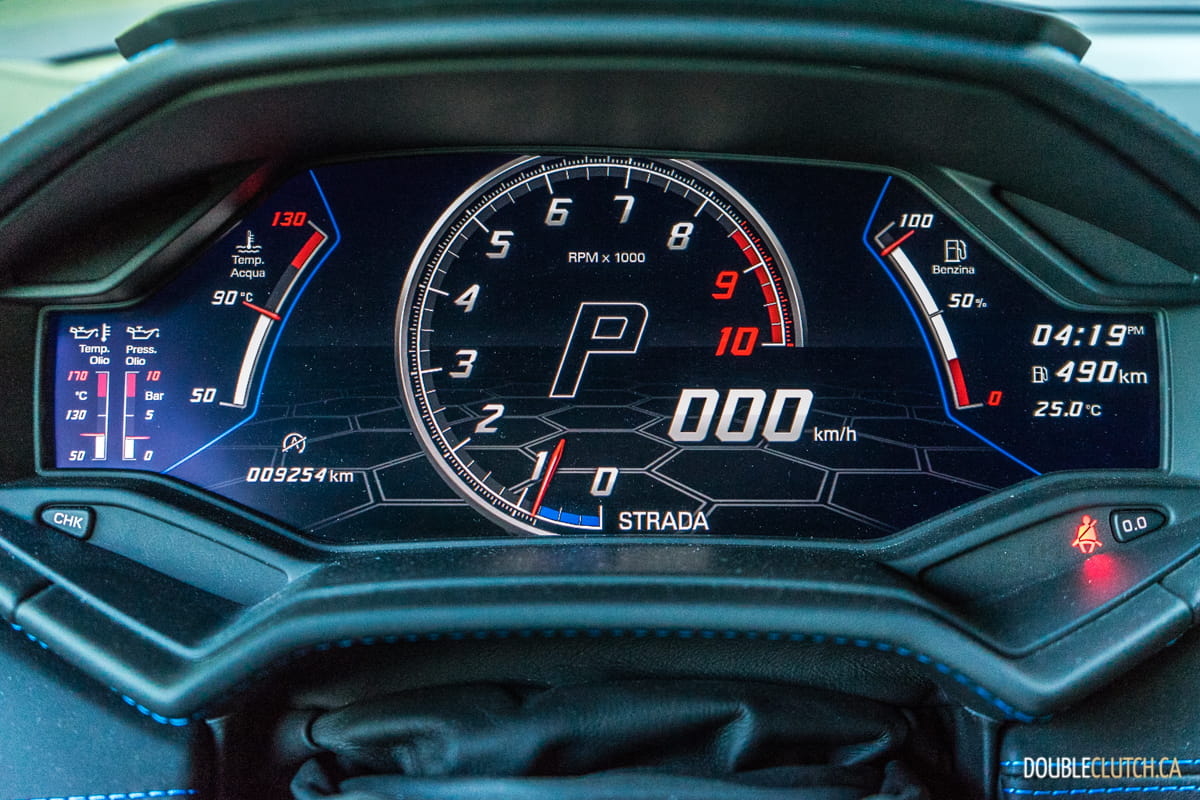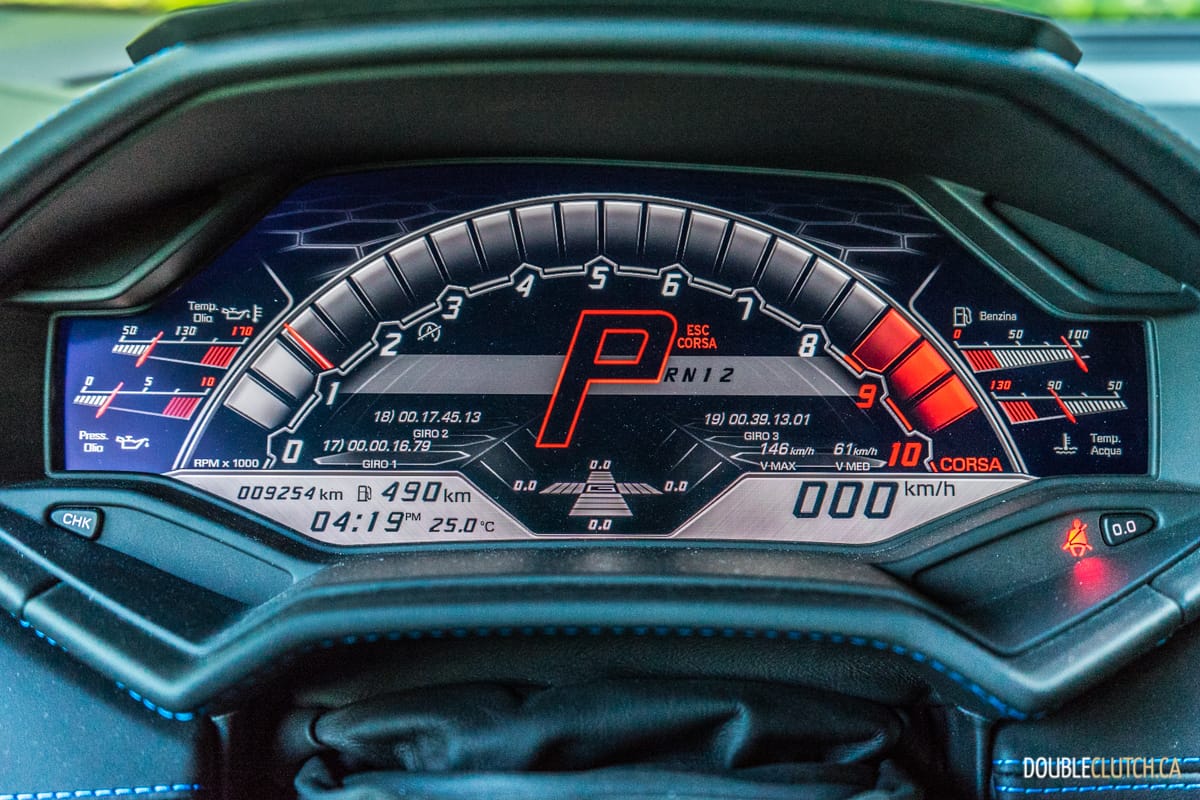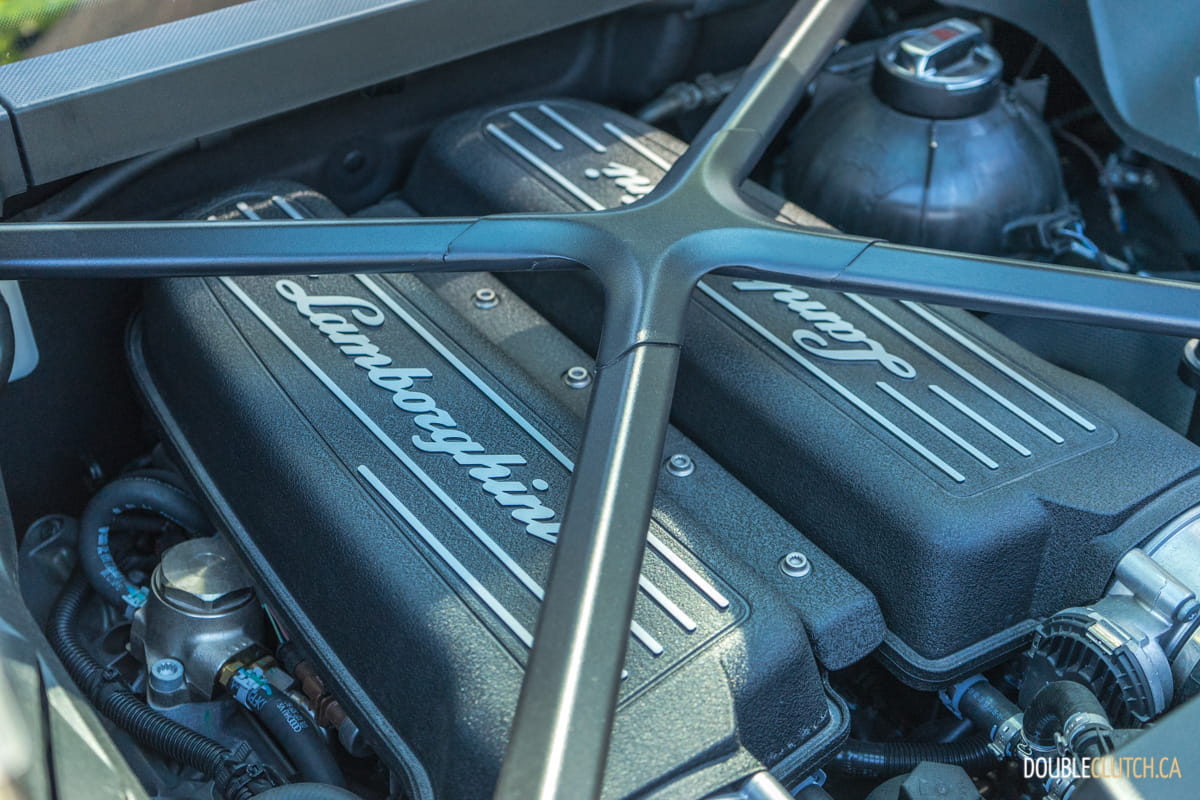It may divert slightly from the traditional supercar recipe, but as a sum of its parts, this wild two-door, even painted in the relatively tame Grigio Artis, is just sensational. We jumped behind the wheel of this 2020 Lamborghini Huracan Evo Coupe with all-wheel-drive to spend a few days learning more about the intricacies of this fine Italian machine.
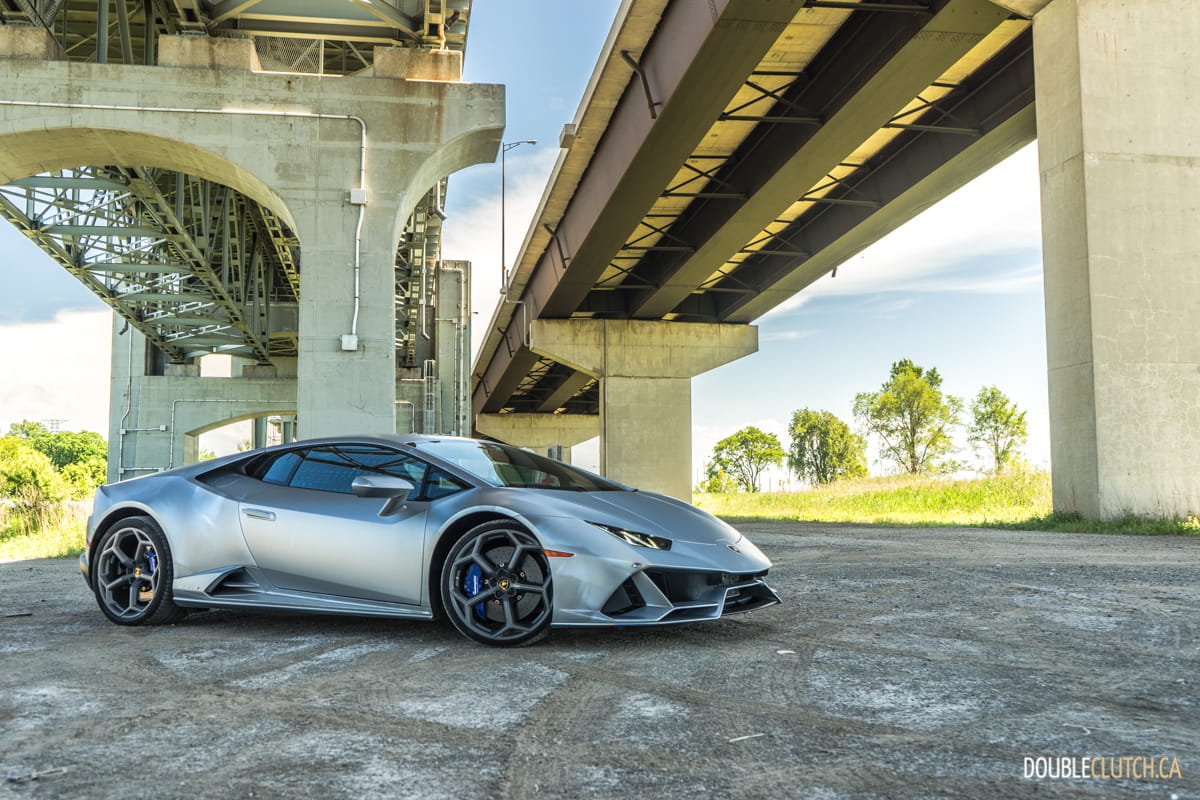
The Evo builds on the Huracan’s already-incredible formula by adding rear-wheel steering and a power bump. It maintains the subtle looks of the regular model rather than take on the visual aero of the Performante (reviewed here) that it shares many other things with. A new fascia and rear-end updates tidy things up for a supercar that’s definitely worthy of the Lamborghini badge. Even painted in this matte silver, the Evo got attention everywhere it went and with kids now on summer holidays, it was a hit around the neighborhood.
Located behind the passenger cabin is a 5.2-liter naturally aspirated V10, which also happens to be the only V10 on sale today. Yes, we know the Audi R8 (reviewed here) exists, but it shares the same essential motor. Output is 631 horsepower at a screaming 8,000RPM and 442 lb-ft. of torque at 6,500RPM. This engine is a real sweetheart, and revs freely right up to the redline. A seven-speed dual-clutch gearbox is a vast improvement over the single-clutch unit the Aventador is still plagued with, and snaps off shifts in milliseconds. The response from this powertrain really is like nothing else, and it rockets to 100km/h in well under three seconds.
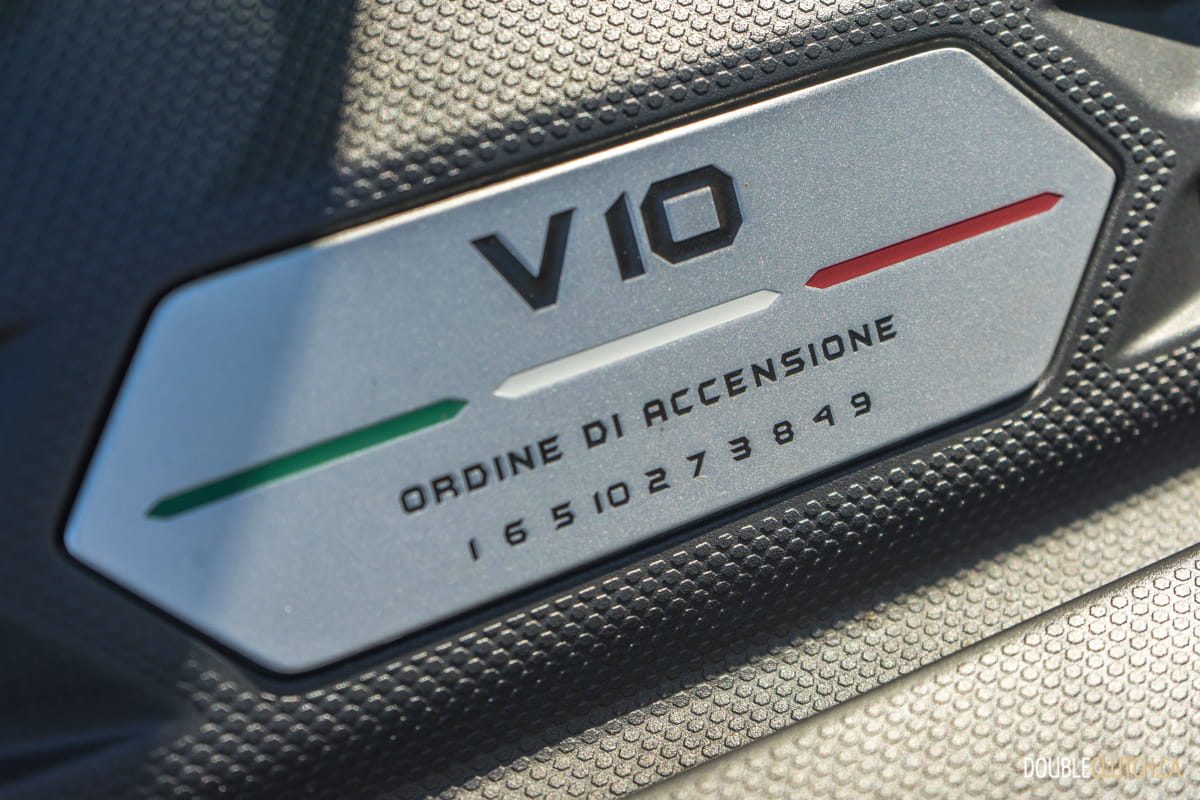
The Lamborghini Dinamica Veicolo Integrata (LDVI) system is the heart of the Huracan. It processes inputs and pushes them through the rear-wheel steering, torque vectoring, all-wheel-drive system, stability control, and adaptive damping systems. Lambo claims that this system uses feed-forward logic and is able to actually pre-determine what the driver’s moves are, keeping the car ready for anything. Factors the LDVI system takes into account include acceleration, wheel-positions, steering angle, pitch, yaw, and roll.
The variable ratio steering that was formerly optional on the Huracan is standard on the Evo, and the way this thing snakes through the rural twisties and the urban jungle alike is indescribable. The Evo’s rear-wheel steering gives it a tight turning radius when required, and this supercar can turn on a dime like few others. Out on the open road, the handling is exceptionally responsive, making moves and lane changes with only a faint thought required by the driver. It doesn’t present as much of a challenge as a McLaren or Ferrari, but the steering is crisp and rewarding.

Now, onto why this Huracan is my favourite supercar out there. It’s not as wild or obnoxious as the V12-powered Aventador (reviewed here), a Lamborghini staple quality, however the Huracan still maintains everything that makes a modern supercar special. Gone are the days where these cars are tough to live with, as our beloved automakers have now found a way to maintain the eye-catching aesthetics and attributes of a supercar with enough practicality to endure them on the daily.
The Huracan has a quick-acting nose-lift button that’ll allow you to go over speed humps and enter driveways without scraping the front lip. It’s relatively easy to get in and out of, and visibility isn’t god-awful. It still makes a wonderful noise, especially with the performance exhaust turned on and the mode selector set to “Corsa”. The all-wheel-drive system means it can be driven in the winter should you want to, though ground clearance will still be an issue in deep snow conditions.
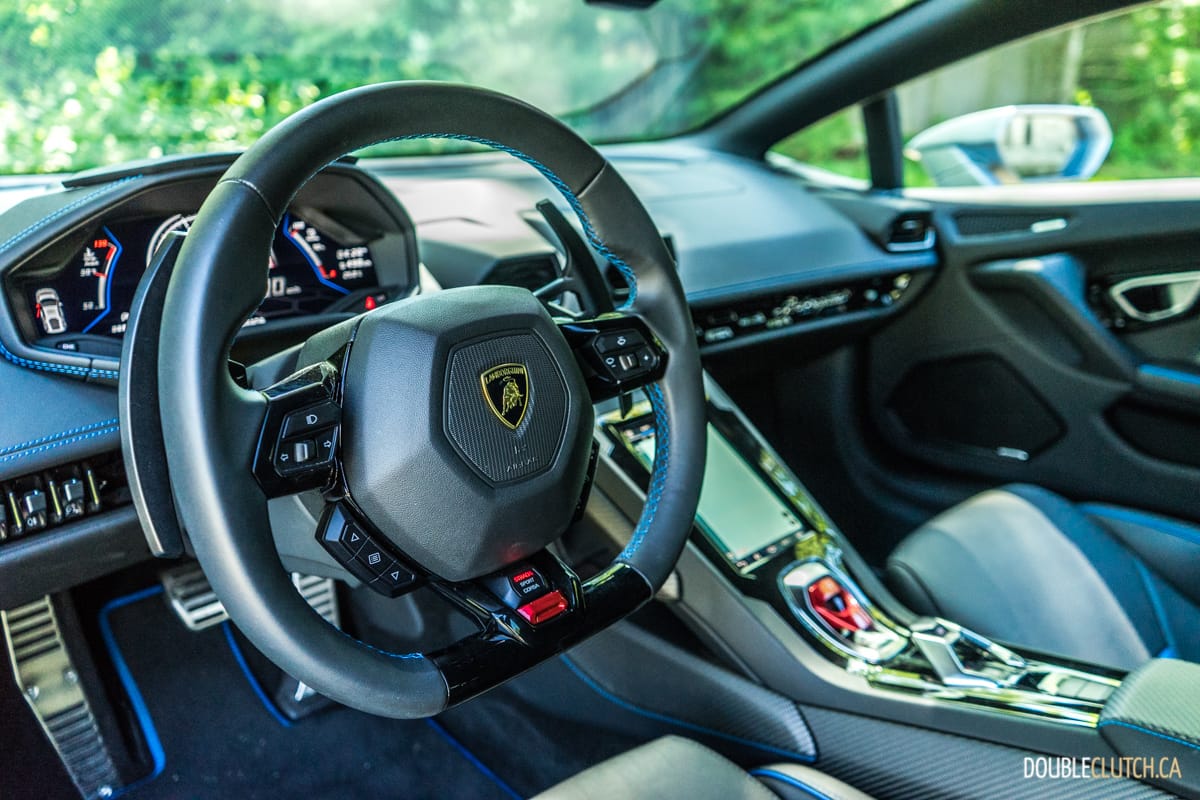
Inside the cockpit, the 2020 Lamborghini Huracan EVO Coupe is all supercar. While the doors don’t open upwards as in Lamborghini tradition, the interior is as wild as expected. The turn signals are controlled using a button on the steering wheel rather than on a stalk, and the window controls are switches on the center stack. A new 8.4-inch touchscreen powers the new infotainment system that replaces the old and clunky Audi-based unit. It offers Apple CarPlay and smartphone connectivity, but is difficult and distracting to use. Volume is adjusted using a swipe gesture, and sound quality over Bluetooth calls is subpar. That said, the optional Sensonum sound system sounds great, though we can’t imagine why anyone would want to listen to music over the song of the V10 behind the cabin.
The base price of the Huracan Evo with all-wheel-drive is $305,691, but we all know that no vehicles are being transacted at the base price. Our test vehicle had a plethora of options, including the Grigio Artis paint for $22,400, the smartphone interface at $4,800, Telemetry Package at $7,100, Sensonum sound system, 20-inch wheels, blue calipers, powered and heated seats, ambient lighting, and more. The total sticker comes to roughly $385,000. The newly introduced Huracan EVO rear-wheel-drive is also the cheapest way to get one, so that may be an option for some buyers.
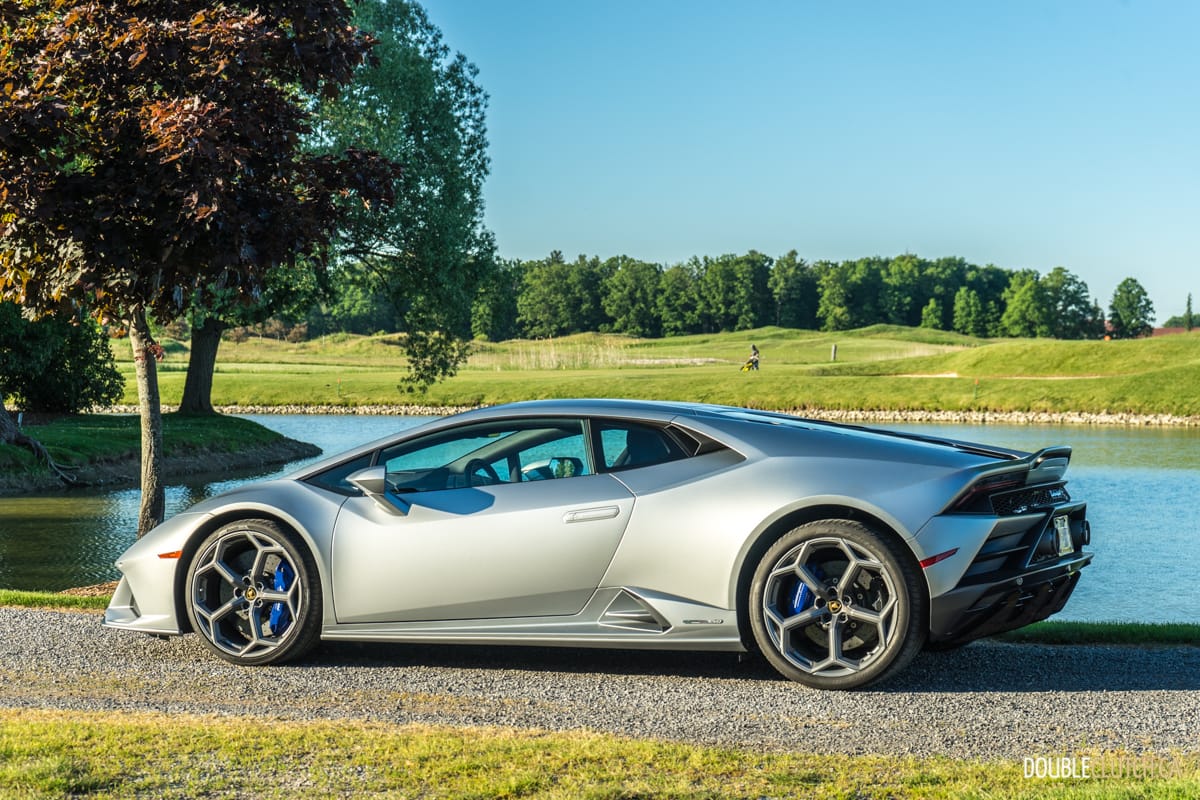
The 2020 Lamborghini Huracan Evo Coupe is a decision made by the heart, through and through. It offers unmatched performance and livable practicality for the car enthusiast that wants to attack the track with one of the most capable machines money can buy today. It’s not the most Lamborghini of supercars, but it’s every bit what the current generation of auto enthusiasts desires. The 20L/100km consumption is completely forgotten after a neck-snapping shift near the redline. It’ll be hard for any of Lamborghini’s competitors to top the Huracan, because it really is one of those overall packages that’s nearly impossible to outdo.
See Also:
2018 Lamborghini Huracan Performante

